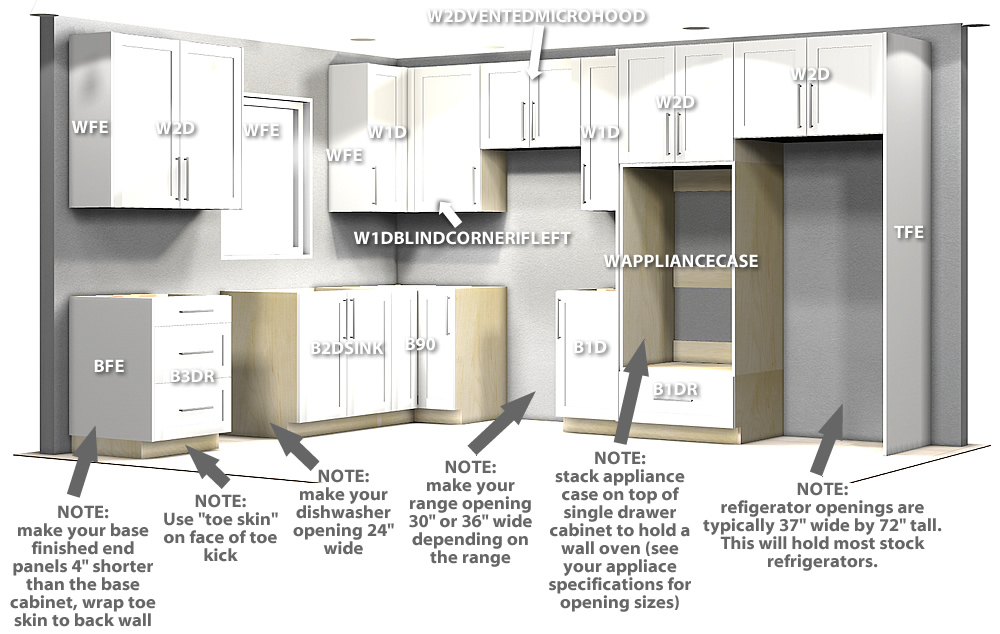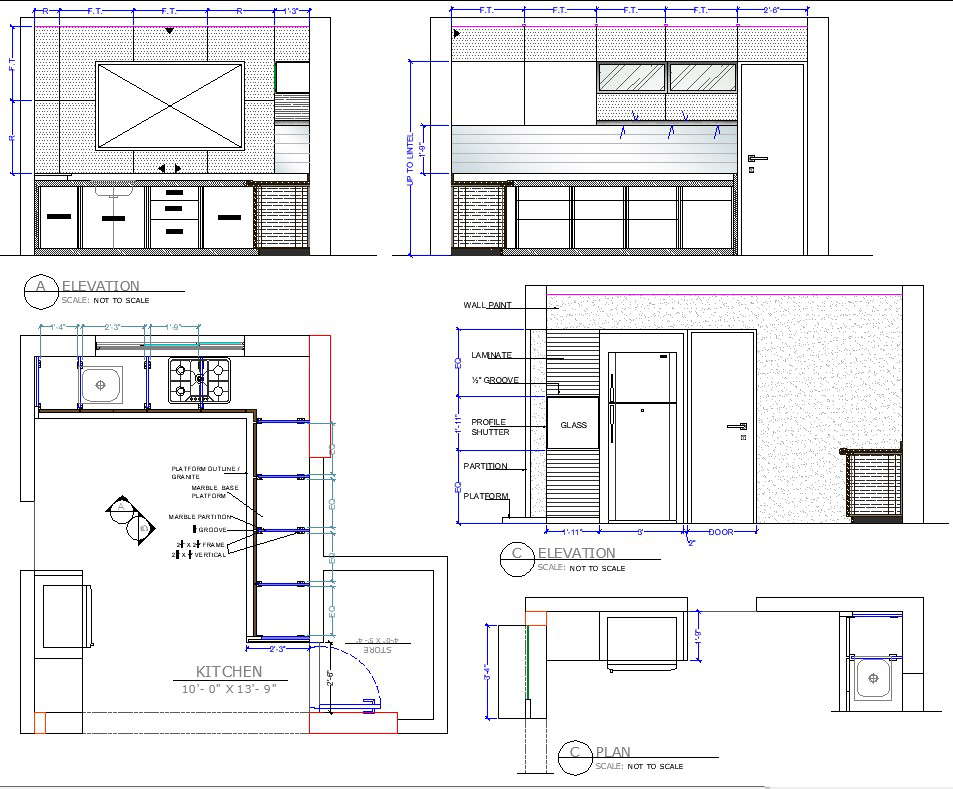Kitchen Cabinet Design Styles: Kitchen Cabinet Design Details

Choosing the right kitchen cabinet design style is essential for creating a space that reflects your personal taste and complements your home’s overall aesthetic. Kitchen cabinet styles range from traditional to modern, each with unique features and characteristics that can transform the look and feel of your kitchen.
Traditional Kitchen Cabinet Styles
Traditional kitchen cabinet styles exude a timeless elegance and warmth. They often feature intricate details, ornate hardware, and classic finishes that create a sense of history and sophistication.
- Shaker Cabinets: Shaker cabinets are characterized by simple, rectangular doors with a recessed center panel. They are known for their clean lines, understated elegance, and versatility, making them suitable for both traditional and contemporary kitchens.
- Raised Panel Cabinets: Raised panel cabinets feature doors with a raised center panel that adds dimension and visual interest. They are typically found in traditional kitchens and can be customized with various wood species, finishes, and hardware to create a unique look.
- Beaded Cabinets: Beaded cabinets are a classic choice for traditional kitchens. They feature doors with a beaded edge that adds a touch of charm and elegance. Beaded cabinets are often paired with ornate hardware and warm finishes to create a sophisticated and inviting atmosphere.
Modern Kitchen Cabinet Styles
Modern kitchen cabinet styles are characterized by clean lines, minimalist details, and a focus on functionality. They often feature sleek, geometric shapes, bold colors, and innovative materials that create a contemporary and sophisticated look.
- Slab Cabinets: Slab cabinets feature doors with a flat, uninterrupted surface, creating a clean and minimalist look. They are often made from high-quality materials such as lacquered wood, stainless steel, or high-gloss acrylic, and can be customized with a variety of colors and finishes.
- Frameless Cabinets: Frameless cabinets feature doors that are mounted directly to the cabinet box, eliminating the need for traditional frames. This creates a sleek and contemporary look and maximizes storage space.
- High-Gloss Cabinets: High-gloss cabinets are a popular choice for modern kitchens. They reflect light, creating a sense of spaciousness and adding a touch of glamour to the space. High-gloss cabinets are often available in a variety of bold colors, adding a pop of personality to the kitchen.
Contemporary Kitchen Cabinet Styles
Contemporary kitchen cabinet styles bridge the gap between traditional and modern design. They often feature clean lines, simple details, and a focus on functionality, but also incorporate elements of warmth and personality.
- Mid-Century Modern Cabinets: Mid-century modern cabinets are inspired by the design aesthetic of the 1950s and 1960s. They feature simple, geometric shapes, natural materials, and a focus on functionality. They are often paired with warm wood tones, metallic accents, and bold colors to create a sophisticated and inviting atmosphere.
- Transitional Cabinets: Transitional cabinets blend traditional and modern elements to create a timeless and versatile look. They often feature simple, clean lines, but also incorporate subtle details and traditional finishes, such as raised panels or beaded edges. Transitional cabinets can be customized with a variety of hardware and finishes to create a unique look that complements the overall design of the kitchen.
Farmhouse Kitchen Cabinet Styles
Farmhouse kitchen cabinet styles are inspired by the rustic charm of country living. They often feature distressed wood, open shelving, and a focus on functionality.
- Rustic Cabinets: Rustic cabinets are made from reclaimed or weathered wood, creating a warm and inviting atmosphere. They often feature distressed finishes, exposed knots, and a natural wood grain, adding a touch of character to the kitchen.
- X-Style Cabinets: X-style cabinets are a popular choice for farmhouse kitchens. They feature doors with an “X” design, adding a touch of rustic charm and visual interest. X-style cabinets are often paired with open shelving, exposed beams, and natural materials to create a warm and inviting atmosphere.
Transitional Kitchen Cabinet Styles
Transitional kitchen cabinet styles blend traditional and modern elements to create a timeless and versatile look. They often feature simple, clean lines, but also incorporate subtle details and traditional finishes, such as raised panels or beaded edges.
- Shaker Cabinets with Modern Hardware: Shaker cabinets are a versatile choice for transitional kitchens. They can be paired with modern hardware, such as sleek bar pulls or minimalist knobs, to create a contemporary twist on a classic design.
- Raised Panel Cabinets with Contemporary Finishes: Raised panel cabinets can be given a contemporary update with the use of bold colors, high-gloss finishes, or unique hardware. This creates a balance between traditional details and modern aesthetics.
Functional Considerations for Kitchen Cabinet Design

Functionality is paramount in kitchen cabinet design, as it directly impacts the usability and efficiency of this central space. Well-designed cabinets maximize storage, optimize workflow, and enhance the overall functionality of the kitchen.
Storage Needs
The first step in designing functional kitchen cabinets is assessing storage needs. This involves considering the size of the family, dietary habits, and the frequency of cooking. For instance, a family that enjoys cooking elaborate meals will require more storage space for ingredients, cookware, and appliances.
- Assess the volume of items: This includes food items, cookware, appliances, utensils, and other kitchen essentials.
- Categorize items: Group items based on their use, such as baking supplies, pantry staples, cookware, and utensils.
- Prioritize items: Identify frequently used items and ensure they are easily accessible.
Appliance Placement
Strategic appliance placement is crucial for creating an efficient workflow in the kitchen. The placement should facilitate easy access and minimize movement while preparing meals.
- Consider the work triangle: This concept emphasizes the placement of the refrigerator, sink, and stove in a triangular formation, ensuring a smooth and efficient workflow.
- Prioritize functionality over aesthetics: While aesthetics are important, prioritize functionality in appliance placement to optimize workflow and ease of use.
- Utilize available space: Make the most of available space by incorporating appliances into cabinet designs.
Work Triangle
The work triangle is a fundamental concept in kitchen design that emphasizes the efficient placement of the refrigerator, sink, and stove. This triangular arrangement ensures a smooth and efficient workflow, minimizing unnecessary movement and maximizing productivity.
- Ideal dimensions: The ideal distance between each point of the triangle is 4 to 6 feet.
- Avoid obstructions: Ensure that the work triangle is not obstructed by furniture, islands, or other obstacles.
- Consider traffic flow: Ensure that the work triangle does not impede traffic flow in the kitchen.
Traffic Flow, Kitchen cabinet design details
Traffic flow is crucial for ensuring a functional and comfortable kitchen. It refers to the movement of people within the space, and a well-designed kitchen allows for easy navigation and movement.
- Plan walkways: Ensure that walkways are wide enough to accommodate movement without obstruction.
- Avoid bottlenecks: Design the kitchen to avoid bottlenecks or areas where traffic flow is restricted.
- Consider the placement of doors and windows: Ensure that doors and windows do not obstruct traffic flow.
Maximizing Storage and Efficiency
Maximizing storage and efficiency in kitchen cabinet design involves incorporating innovative solutions that optimize space utilization.
- Vertical storage: Utilize vertical space by incorporating tall cabinets and shelving.
- Pull-out drawers: Utilize pull-out drawers for easy access to items stored in deep cabinets.
- Lazy Susans: Incorporate lazy Susans in corner cabinets for easy access to items stored in the back.
- Under-sink storage: Utilize the space under the sink by incorporating pull-out drawers or shelves.
Common Kitchen Cabinet Types and Their Optimal Uses
| Cabinet Type | Optimal Uses |
|---|---|
| Base Cabinets | Storing heavy items, appliances, cookware, and pantry items. |
| Wall Cabinets | Storing dishes, glasses, and other lightweight items. |
| Pantry Cabinets | Storing bulk food items, appliances, and other non-perishable goods. |
| Corner Cabinets | Storing items that are not frequently used or maximizing space in corners. |
| Island Cabinets | Providing additional storage, workspace, and seating. |
Material and Finish Choices for Kitchen Cabinets

The heart of any kitchen lies in its cabinets. They not only offer ample storage space but also contribute significantly to the overall aesthetic appeal of the room. Choosing the right material and finish for your kitchen cabinets is a crucial decision that influences their durability, cost, and style.
Popular Materials for Kitchen Cabinets
The material you choose for your kitchen cabinets will determine their durability, cost, and overall look. Here are some of the most popular options:
- Wood: Natural wood offers timeless beauty, warmth, and durability. Popular choices include oak, maple, cherry, and walnut, each with its unique grain pattern and color variations.
- Engineered Wood: Engineered wood options like MDF (Medium-Density Fiberboard) and plywood offer cost-effectiveness and consistency. MDF is denser and more uniform, while plywood is made from layers of veneer, making it more stable and less prone to warping.
- Laminates: Laminates are durable, moisture-resistant, and available in a wide range of colors and patterns, making them a budget-friendly choice. They are also easy to clean and maintain.
Pros and Cons of Different Cabinet Materials
| Material | Pros | Cons |
|---|---|---|
| Wood |
|
|
| Engineered Wood |
|
|
| Laminates |
|
|
Selecting the Right Cabinet Finish
The finish you choose for your cabinets will impact their look and feel, as well as their durability. Here are some popular options:
- Paint: Paint offers a wide range of color options and can be used to create a variety of looks, from sleek and modern to classic and traditional.
- Stain: Stain enhances the natural beauty of wood by bringing out its grain patterns and color variations. It creates a more natural and rustic look.
- Glaze: Glaze is a translucent coating that adds depth and dimension to painted or stained cabinets. It can create a distressed or antique look.
Cabinet Finishes and Kitchen Styles
| Finish | Suitable Kitchen Styles |
|---|---|
| Painted cabinets with a high-gloss finish | Modern, contemporary, minimalist |
| Stained cabinets with a natural finish | Traditional, farmhouse, rustic |
| Glazed cabinets with a distressed finish | Cottage, farmhouse, shabby chic |
| Laminate cabinets with a sleek finish | Contemporary, modern, minimalist |
Kitchen cabinet design details are the unsung heroes of a beautiful and functional kitchen. From the choice of hardware to the placement of shelves, these seemingly small choices can make a big difference in the overall feel of your space.
Don’t forget to consider adding a touch of personality with small wreaths for kitchen cabinets. These charming accents can instantly elevate your cabinets and create a welcoming atmosphere. Remember, it’s the details that truly make a space feel like home, so pay attention to every aspect of your kitchen cabinet design.
Kitchen cabinet design details are crucial for maximizing both functionality and aesthetics. You can showcase your culinary passions by incorporating a dedicated coffee bean display cabinet into your design. This allows you to not only store your beans in style but also add a touch of personality to your kitchen, making it a truly inspiring space.